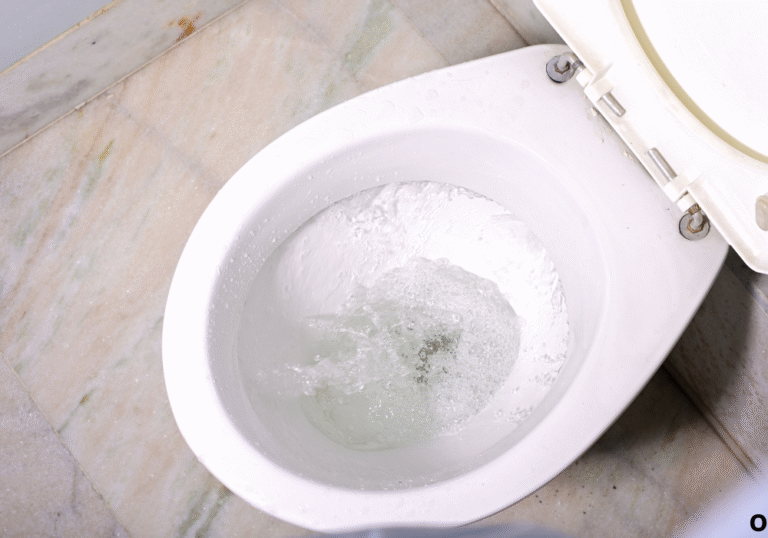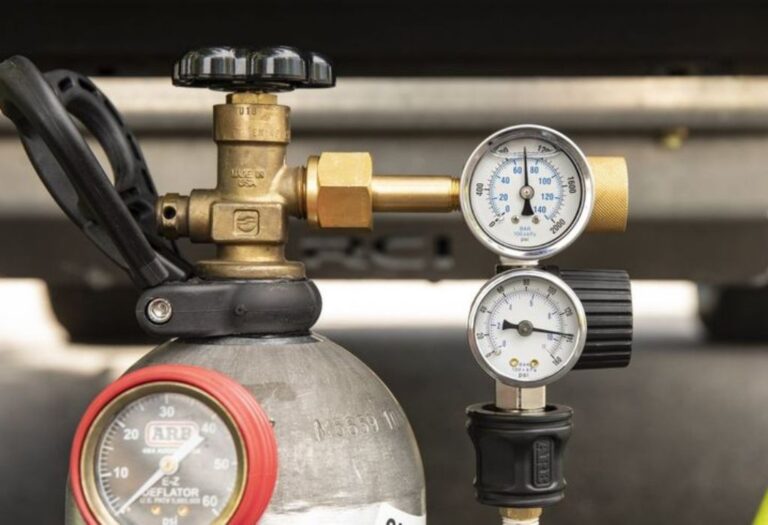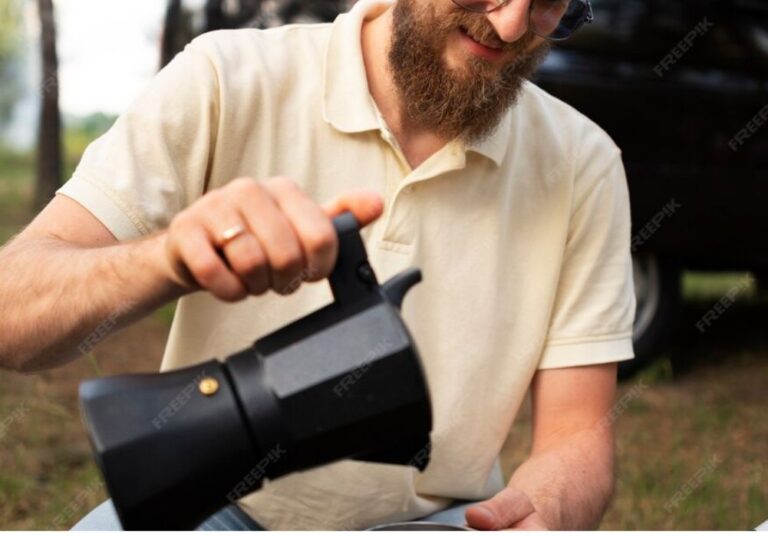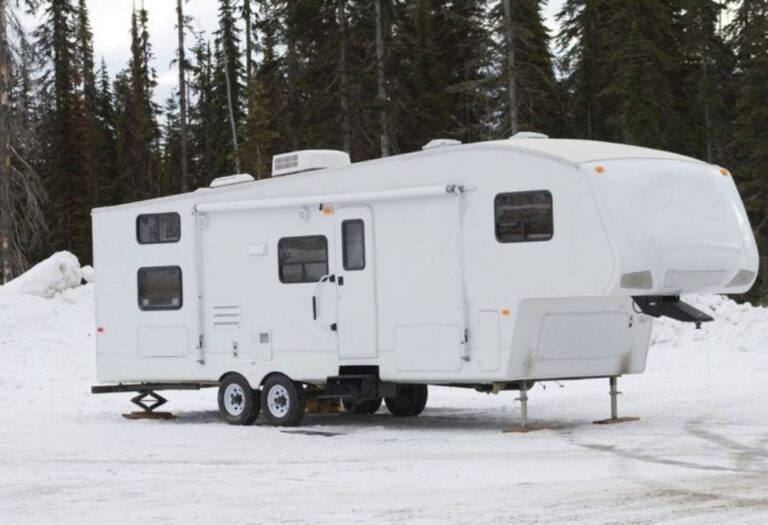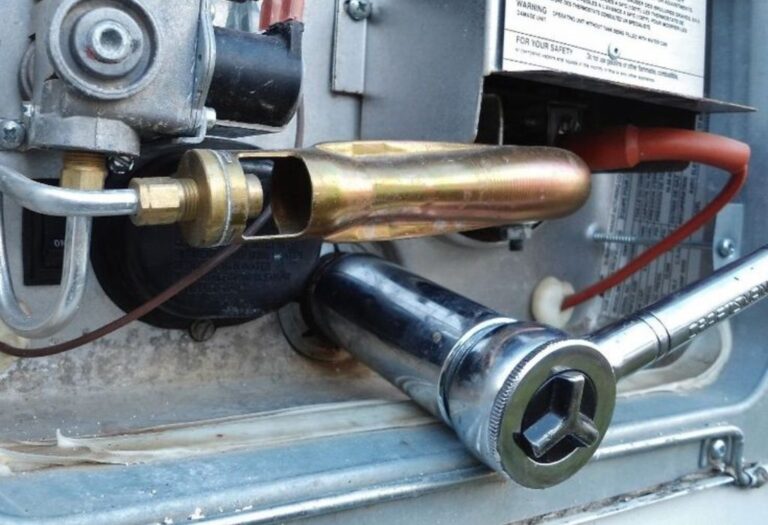How to Prime an RV Fresh Water Pump Correctly
Imagine turning on your RV faucet after a long trip, only to hear sputtering sounds and see no water coming out.
It’s one of the most common frustrations for travelers, and it often means your pump has lost its prime.
Knowing how to prime RV fresh water pump correctly can save you from wasted time, confusion, and the unpleasant surprise of a dry tap when you need water most.
Priming is the process of filling the pump and water lines with enough water to allow suction and proper pressure.
Without it, air trapped inside prevents the system from drawing water from the tank.
According to RVshare, this issue frequently occurs after winter storage, system maintenance, or when the fresh water tank has been run completely dry. A quick and accurate priming process ensures steady water pressure and a healthy pump lifespan.
Statistics show that nearly 60% of RV owners experience water flow issues related to airlocks or improper priming each season .
These problems not only interrupt your travel comfort but can also strain the pump’s internal diaphragm and motor if left unresolved.
This guide will walk you step-by-step through the complete process of priming your RV’s water system, identifying common causes, and troubleshooting persistent issues.
Whether you’re de-winterizing your RV or restarting your system for a new trip, learning how to prime RV fresh water pump will keep your water lines flowing smoothly and your adventures stress-free.
What Does “Priming” Mean & Why It Matters
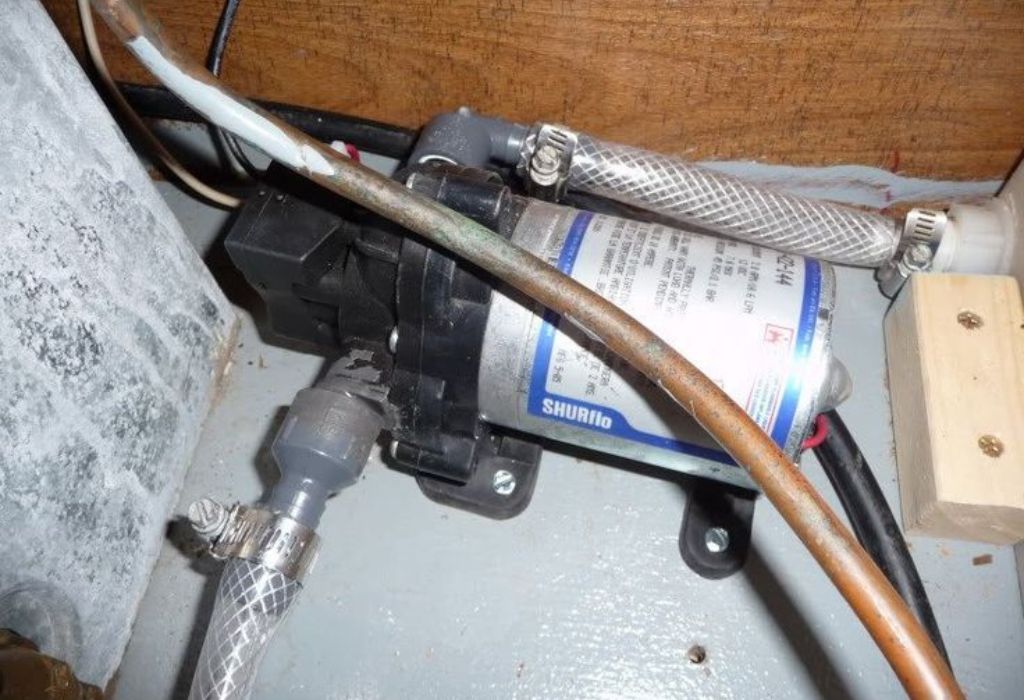
Priming an RV water pump means removing air from the suction lines and replacing it with water. The pump must have water inside to create enough suction to pull water from the fresh tank and deliver it through faucets. When air gets trapped, the pump runs but no water flows — that’s a sign it’s lost prime.
If the pump runs dry for too long, it can overheat and damage the internal diaphragm or motor. Regular priming prevents airlocks, maintains consistent pressure, and ensures reliable operation of your RV plumbing system.
What is pump priming?
Priming fills the pump and intake line with water to enable suction and pressure buildup.
Why do RV pumps lose prime?
Air leaks, low tank levels, or disconnected lines allow air into the system, breaking suction.
Do self-priming pumps need manual help?
Yes. Even self-priming pumps can struggle after storage, replacement, or long dry runs.
How often should you prime an RV pump?
After every full drain, winterization, or system repair.
Is priming the same as bleeding the lines?
No. Priming gets water into the pump; bleeding releases air after priming.
Common Reasons the Pump Won’t Prime
When your pump runs but fails to deliver water, it’s usually caused by air trapped in the suction line or a blockage in the system. Identifying the right cause saves time and prevents unnecessary replacements.
Can air leaks cause priming failure?
Yes. Even tiny leaks in fittings or hoses prevent the pump from creating suction.
Does the tank level affect priming?
Absolutely. If the tank is below half, gravity can’t assist water flow to the inlet.
Could a clogged strainer or filter be the culprit?
Yes. Dirt or debris in the intake screen blocks water from reaching the pump.
What about a faulty check valve?
A leaky valve allows water to flow backward, introducing air and breaking prime.
Can winterizing lead to lost prime?
Yes. Drained lines and open valves after winter storage can leave air pockets in the system.
Preparations Before You Prime
Before you start, inspect the system to prevent leaks and contamination. Always work safely around pressurized lines and electrical connections.
- Ensure your fresh water tank is at least half full.
- Turn off power to the pump before disconnecting hoses.
- Locate your pump — usually near the water tank or under the sink.
- Gather tools like a clean funnel, jug of potable water, screwdriver, and towel.
- Verify that all valves are in the correct position (bypass valves closed, tank valves open).
Why should power be off before priming?
It prevents the pump from running dry while you prepare lines.
Do I need to disconnect from city water?
Yes. City water pressure can backfeed or damage the system during priming.
Should all faucets be open?
Open at least one faucet to vent trapped air during priming.
How do I locate the pump intake?
Trace the line from the fresh water tank to the pump — it’s usually a flexible clear hose.
Is clean water mandatory for priming?
Always use potable water to avoid contamination inside the plumbing system.
Step-by-Step Guide: How to Prime RV Fresh Water Pump
Priming takes just a few minutes once you know the correct sequence. Follow these steps carefully:
- Fill the fresh water tank — at least 50–75% full.
- Open a faucet near the pump to allow air to escape.
- Remove the intake line from the pump and pour clean water into the inlet port using a funnel.
- Reattach the intake hose securely to prevent leaks.
- Turn on the pump and allow it to run until steady water flows from the faucet.
- Close the faucet once pressure stabilizes, signaling successful priming.
According to EnviroDesign Products, slow, steady pouring is key to avoid introducing more air. Once you see a consistent stream, the system is primed.
How much water should I pour into the inlet?
A few cups are usually enough to fill the suction chamber and line.
How long does priming take?
Typically 2–5 minutes if no leaks or blockages exist.
Should all faucets be opened afterward?
Yes, briefly open all faucets to release remaining air bubbles.
Why is my pump still sputtering?
Air may still be trapped — repeat the process until a solid flow returns.
What if water leaks at connections?
Tighten clamps or fittings; leaks immediately reintroduce air.
Troubleshooting When the Pump Still Won’t Prime
Sometimes even after following the right steps, water won’t flow properly. That’s when deeper inspection is needed.
Why does my pump run continuously?
It’s not reaching pressure due to air leaks, worn diaphragm, or loose fittings.
Could a damaged check valve stop priming?
Yes. Replace if you notice backflow or hear air re-entering the lines.
How do I check for suction leaks?
Spray soapy water on joints — bubbles reveal escaping air.
What if only one faucet has flow?
There may be localized airlocks or partial blockages.
Is it safe to loosen the outlet nut to bleed air?
Yes. Loosen slightly to release trapped air, then tighten once water flows (as suggested by Escape Forum).
If these steps don’t help, the internal diaphragm or impeller may be worn out. In that case, replacing the pump is often faster and cheaper than repeated repairs.
Best Practices After Priming & During Regular Use
Once your system is primed and running smoothly, maintaining it properly will prevent future airlocks.
- Keep your tank filled above one-third capacity to avoid sucking air.
- Inspect hoses and clamps regularly for signs of wear.
- Flush your water system before every season.
- Use RV-safe antifreeze during winterization to avoid internal drying.
How long should I let faucets run after priming?
For about 30–60 seconds to ensure all air exits the lines.
Do I need to prime again if I switch to city water?
No, city water bypasses the pump system.
Why does my pump lose prime overnight?
Air may be entering through a small leak or bad check valve.
Can water backflow cause airlocks?
Yes. A failing check valve can let water drain back into the tank.
What should I do before storage?
Drain or winterize the system to prevent freezing and line cracks.
Special Tips and Alternate Priming Methods

Every RV system is unique, so certain models offer built-in priming features or alternate setups.
Can I use the winterize hose to prime the pump?
Yes. Connect the hose to a jug of clean water, open the valve, and let the pump pull water through.
Is running the pump dry briefly harmful?
A few seconds is fine, but prolonged dry runs can damage the diaphragm.
What if my pump is mounted higher than the tank?
Prefill the suction hose with water or use a manual priming bulb to create suction.
Does temperature or altitude affect priming?
Yes. Colder weather or thin air can slow water flow and create vapor locks.
Can a second person help?
Definitely. One can pour water into the inlet while the other monitors the faucet output.
Maintenance & Preventive Checks
Consistent maintenance ensures your pump keeps its prime and runs efficiently.
How often should the strainer be cleaned?
At least every few months, or whenever you notice reduced water pressure.
Should you replace hoses regularly?
Yes, every 3–5 years, or sooner if you notice cracks or leaks.
Do electrical connections affect priming?
Loose wiring can reduce pump speed, leading to weak suction.
How do I prevent mineral buildup?
Flush the system with a vinegar-water solution yearly to dissolve deposits.
When should the check valve be replaced?
Whenever you notice backflow or inconsistent pump pressure.
Conclusion
Knowing how to prime RV fresh water pump is essential for every RV owner. It’s a simple process that ensures your water system runs smoothly, maintains steady pressure, and prevents costly damage. By filling the pump correctly, removing trapped air, and checking for leaks, you guarantee consistent water flow on every trip.
Whether you’re preparing for a summer adventure or opening up your RV after winter storage, proper priming saves time and keeps your system healthy. Follow the step-by-step guide, use the troubleshooting tips when needed, and make pump maintenance part of your regular routine. The result? Reliable water pressure, quiet operation, and stress-free travel wherever the road takes you.
I’m David R. Coleman, the founder, lead writer, and lifelong tool enthusiast behind GarageToolPro.com. With years of experience in automotive repair, woodworking, and home DIY projects, I created this platform to share practical tips, detailed tool reviews, and step-by-step guides that help mechanics, hobbyists, and homeowners get the job done right the first time.

